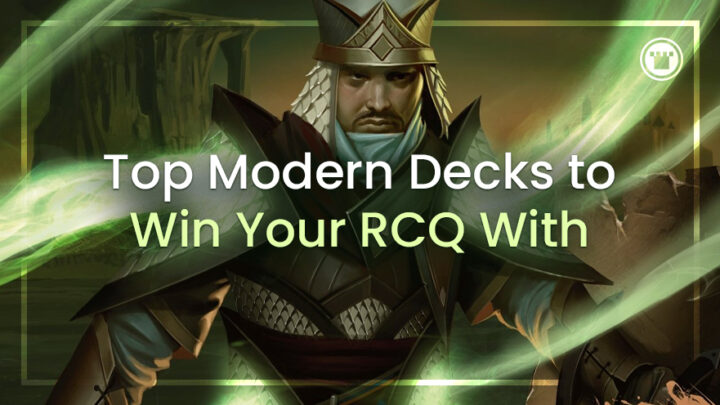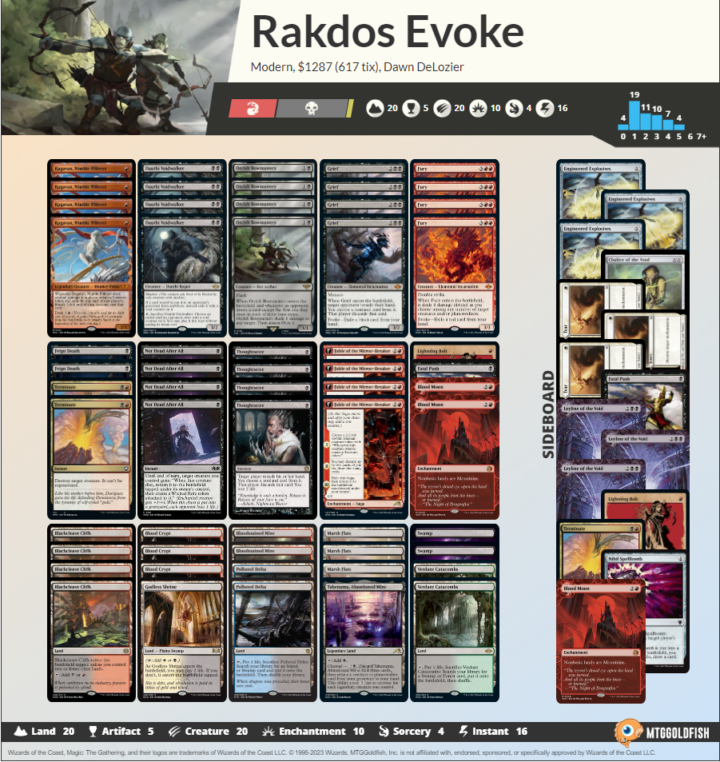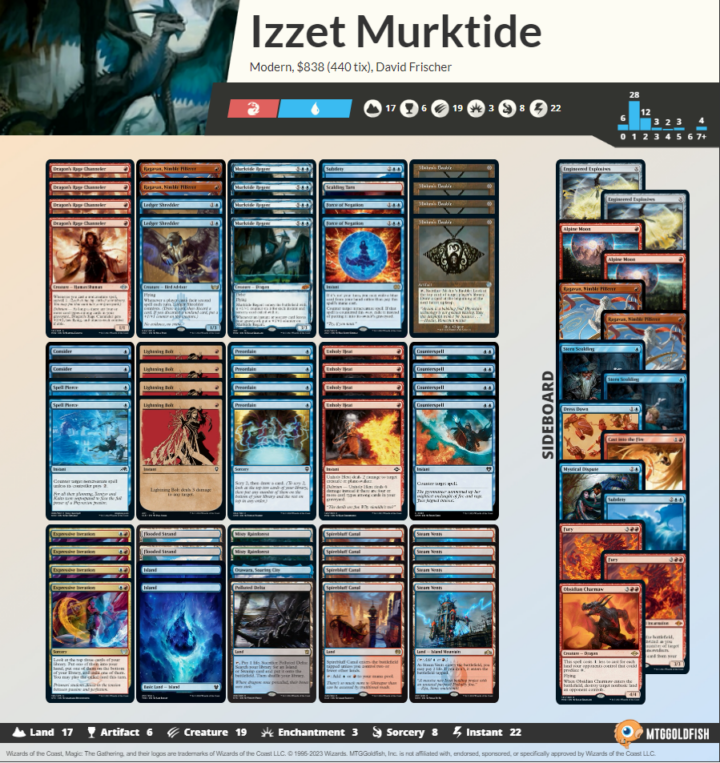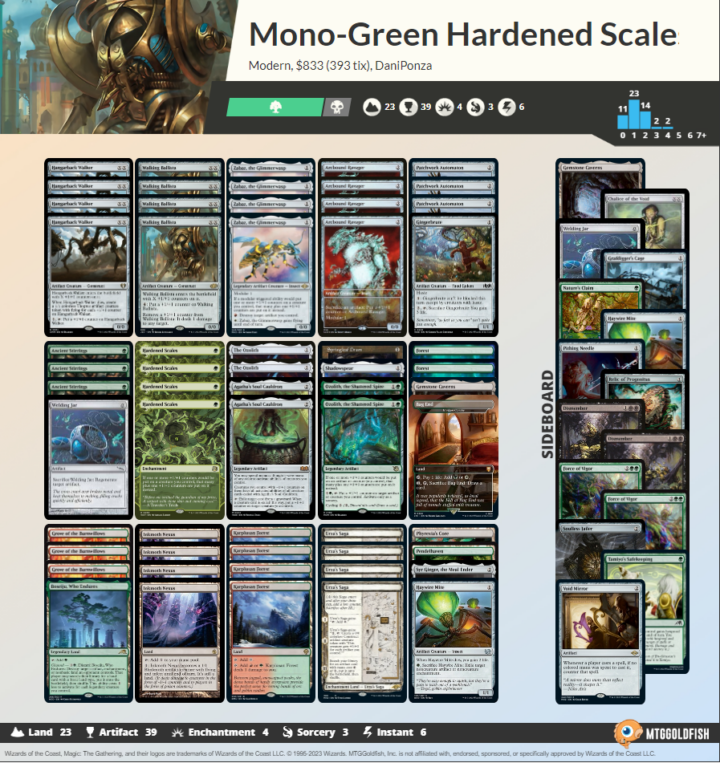Modern has so many decks, so how are you supposed to know which to play for your next Regional Championship Qualifier? Well, I have you covered. I’m going to cover a few decks today that I think are great choices to win your next event (note that just because your deck didn’t make it on this short list doesn’t mean it’s a bad choice).
Scam
Scam is very quickly becoming my money for the best deck in Modern. If you’re looking to just play the stock beat deck right now it’s Scam. I think Yawgmoth might start creeping up there over the coming weeks, but for now it’s Scam (I did write about Yawgmoth last week if you’re interested).
We’ve written a lot about Scam as the archetype has developed, but one thing that players still underappreciated is the ability to splash a third color. It’s really easy to branch out and add a few high impact sideboard cards to your arsenal.
Nathan Steuer did this for the super league playing Mardu Sac with a single Godless Shrine for Wear//Tear. This offered him a lot more game against decks like hammer where normally you’d have to lean incredibly hard on Engineered Explosives to answer cards like Sigarda’s Aid.
Other splashes I have considered are blue for cards like Spell Pierce (because early Grief lines really appreciate that option) or Hurkyl’s Recall as a way to answer the flood-the-board artifact decks, harden scales, hammer, etc.
Along that line of thinking, I have also considered playing Ancient Grudge and splashing green. Grudge is a great way to really punish the artifact decks — especially ones built around a specific card.
Obviously there are tons of cards you can turn to. I only listed a few examples, but high impact sideboard cards are important in Modern.
That said, there is one thing I disagree with Nathan about, and it’s the way he made room for the splash color. He left the tech land in his build and cut a basic Swamp.
I prefer to cut a card like Takenuma if you’re trying to add a third color and still play Blood Moon. Having basics is incredibly important to your game plan.
Murktide
Let’s all have a heart to heart about the big blue boy in the sky. His deck isn’t busted or bad. It’s just alright.
Murktide has been one of the most popular and highest played decks since the release of Modern Horizons 2 just more than two years ago. In that time, this list has become a menace to many players. It’s incredibly efficient and is great at playing a classic, Midrange game plan. It can beat just about anything but isn’t favored much at all.
It may not sound flashy, but those qualities are not necessarily a bad thing if you’re looking for a deck that can consistently put you in top 8 while maybe struggling more with winning an event outright. But if you’re one of the strongest players in the room, you can leverage that fact and convert your skill into a win.
Otherwise, since the release of Preordain, players have flocked back to Murktide a bit more. This handy sorcery makes it hard to flood out in the mid game, plus it really helps you get to delirium for Unholy Heat and Dragon’s Rage Channeler quickly and efficiently. The other big thing is it helps you find your sideboard cards.
Murktide decks often have multiple one and two-ofs in sideboards since the deck often approaches side-boarding with a plan of having a few cards that overlap in multiple matchups. So, while you might not have a bunch of 10/10 sideboard cards, you instead have a bunch of 7/10 for lots of matchups in Modern.
Preordain helps you find the one-of that is the best and stick it to your opponent. Murktide, much like all Midrange decks, lives and dies by how it uses its sideboard.
Hardened Scales
Whenever I do one of these articles, I want to highlight a deck that is a bit under the radar. After all, let’s be honest — a lot of you all want to win, but not by playing the best deck. That’s fair and valid, so I’m happy to oblige.
So why this deck, of all the possibilities, off the radar? Well, Agatha’s Soul Cauldron has done a ton to take this deck to the next level.
Soul Cauldron provides a level of redundancy that is hard to appreciate until you see it happen in a game. Turning all your creatures into super powerful cards like Arcbound Ravager is clearly powerful on first glance, but even just turning your creatures into Haywire Mite is surprisingly effective.
Another slightly underrated part of this card is the additional +1/+1 counters it provides. Normally that’s just a cherry on top, but growing your creature can be more valuable than the activated ability at times, and that’s more likely than not in a deck like Hardened Scales.
Now, it’s not just Soul Cauldron that has me high on this deck. I have often thought that this archetype is sneakily very good in Modern, but it always has had a few problems.
The first is fixed a bit by Soul Cauldron, and it’s the fact that your deck has a few very powerful creatures and a lot of enablers. This means your opponent can pick those power cards apart and overwhelm you before you can rebuild.
The second problem is in a similar vein, and it’s the prevalence of Force of Vigor in the format. That said, we are currently at an all time low on Force of Vigor’s presence in the format, and that card is a huge benefit for choosing this strategy — especially since it’s so hard to overcome.
The last and final problem is a bit of a hurdle but it is the technically easiest to fix: the deck is really hard to play.
I know that seems like a joke or a cop out, but it’s a true fact about this deck. You often have a ton of options available to you and figuring out the best play in any given situation can be really challenging — and that’s before we even start thinking about playing around our opponent’s cards.
This is all an incredibly hard challenge, but if you master Hardened Scales, you will be heavily rewarded. Not only by the deck’s power but the fact most players don’t really understand what you’re capable of, leading to mistakes that can win you games.
It’s not all tricky equity, though. The deck is fairly well positioned. Being able to play long, grindy games while also presenting blistering fast early kills is what you want in a good deck.
If you’re someone who likes the Affinity of old, or just complicated decks that are strong, this is the deck for you.
End step
Modern is such a deep format that I could do three decks every week for a month and just be starting to reach the limits of viable options. Some decks are always going to be better than others, but that’s always the case.
Find a deck you love, go learn it inside and out so you can win your next RCQ. And if this article helps, that’s all the better.

Mason Clark is a grinder in every corner of the game who has played at the pro level and on the SCG Tour with Team Nova. Whether he’s competing in Standard, Historic or Modern, Mason plays with one goal in mind: to be a better player than he was the day before. Check out his podcast, Constructed Criticism, and catch his streams on Twitch.




